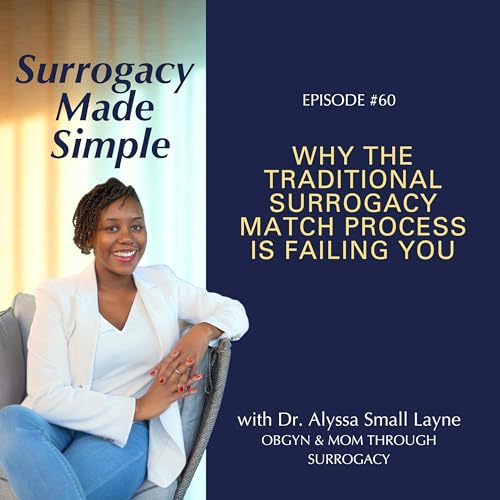Navigating surrogacy insurance is more daunting than ever in 2026.
Thinking you’ve found the perfect surrogate, only to worry about the massive, unpredictable expenses hiding in her insurance?
You’re not alone. As surrogacy insurance evolves in 2026, many intended parents are blindsided by exclusions, rising premiums, and devastating liens—making “insurance options for surrogacy 2026” more confusing (and essential) than ever.
In this episode, Dr. Alyssa Small Layne and Sarah Paige break down every insurance option, debunk myths about surrogacy-friendly plans, and show you how to spot red flags before you match.
Feeling overwhelmed? This discussion will help you take control, protect your budget, and safeguard your journey with confidence.
Don’t let insurance confusion steal your peace—press play to get clarity now!
What You’ll Learn:
00:00 — Why surrogacy insurance is more complicated (and expensive) in 2026
01:32 — What qualifies as “surrogacy friendly” insurance—and why it matters
05:39 — How premiums, deductibles, and out-of-pocket maxes are changing
07:16 — Liens explained: hidden risks in surrogacy insurance
13:27 — Lloyd’s of London and other alternative insurance policies you should know
15:13 — Liens vs. compensation: understanding “right to reimbursement”
27:19 — How to compare your insurance options for surrogacy in 2026
39:11 — Most common states for lien policies and insurance pitfalls
46:17 — The new surrogacy climate in California (and what it means for your journey)
Resources Mentioned:
Key Takeaways:
Premiums are up 18%—out-of-pocket costs now average $10,600 per journey.
Liens are expanding, especially in California, Oregon, Colorado, and Ohio.
Never hide surrogacy from an insurer—it can void coverage and risk employment.
Always compare lien policies to Lloyd’s plans to find the true cost.
Legal support and professional insurance review are essential before matching.
🎧 Wondering which insurance options for surrogacy 2026 are right for you? Use BloomBridge to get your policy professionally reviewed before you match!
 2025/11/0649 分
2025/11/0649 分 26 分
26 分 20 分
20 分 39 分
39 分 2025/10/0935 分
2025/10/0935 分 2025/10/0228 分
2025/10/0228 分 27 分
27 分 20 分
20 分
